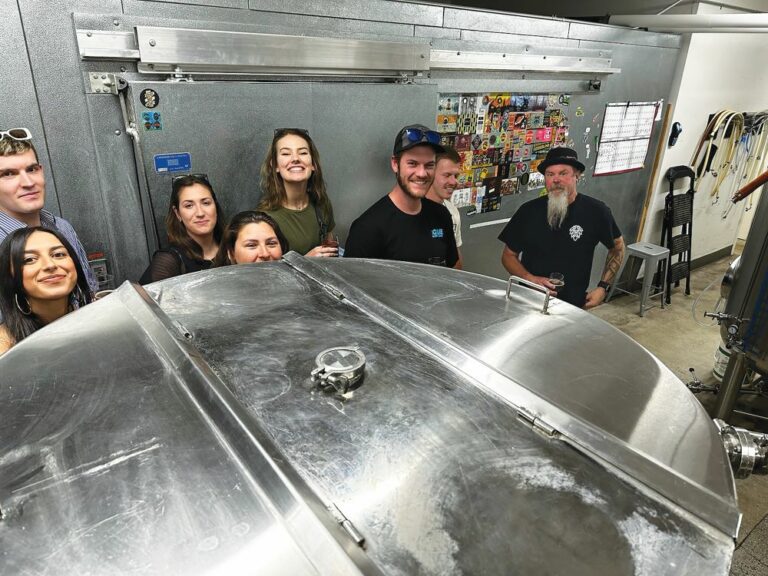ARIES March 21-April 19 JooHee Yoon is an illustrator and designer. She says, “So much of artmaking is getting to know yourself through the creative process, of making mistakes and going down rabbit holes of research and experimentation that sometimes work out—and sometimes don’t.” She adds, “The failures are just as important as the successes.” I would extend this wisdom, applying it to how we create our personalities and lives. I hope you will keep it in mind as you improvise, experiment with and transform yourself in the coming weeks.
TAURUS April 20-May 20 Sometimes, we droop and shrivel in the face of a challenge that dares us to grow stronger and smarter. Sometimes, we try our best to handle a pivotal riddle with aplomb but fall short. Neither of these two scenarios will be in play for you during the coming months. I believe you will tap into reserves of hidden power you didn’t realize you had access to. You will summon bold, innovative responses to tantalizing mysteries. I predict you will accomplish creative triumphs that may have once seemed beyond your capacities.
GEMINI May 21-June 20 Gemini novelist Meg Wolitzer suggests that “one of the goals of life is to be comfortable in your own skin and in your own bed and on your own land.” I suspect you won’t achieve that goal in the coming weeks, but you will lay the foundation for achieving that goal. You will figure out precisely what you need in order to feel at home in the world, and you will formulate plans to make that happen. Be patient with yourself, dear Gemini. Be extra tender, kind and accommodating. Your golden hour will come.
CANCER June 21-July 22 Some astrologers say you Crabs are averse to adventure, preferring to loll in your comfort zones and entertain dreamy fantasies. As evidence that this is not always true, I direct your attention to a great Cancerian adventurer, the traveling chef Anthony Bourdain. In the coming weeks, I hope you will be inspired by these Bourdain quotes: 1. “If I’m an advocate for anything, it’s to move. As far as you can, as much as you can. Across the ocean, or simply across the river. Open your mind, get up off the couch, move.” 2. “What a great way to live, if you could always do things that interest you, and do them with people who interest you.” 3. “The more I become aware of, the more I realize how relatively little I know, how much more there is to learn. Maybe that’s enlightenment enough—to know there is no final resting place of the mind.” 4. “Travel is about the gorgeous feeling of teetering in the unknown.”
LEO July 23-Aug. 22 Author Iain S. Thomas writes, “The universe is desperately trying to move you into the only spot that truly belongs to you—a space that only you can stand in. It is up to you to decide every day whether you are moving towards or away from that spot.” His ideas overlap with principles I expound in my book, Pronoia Is the Antidote for Paranoia: How the Whole World Is Conspiring to Shower You with Blessings. There I propose that life often works to help dissolve your ignorance and liberate you from your suffering. I hypothesize that you are continually being given opportunities to grow smarter and wilder and kinder. In the coming weeks, everything I’ve described here will be especially apropos to you. All of creation will be maneuvering you in the direction of feeling intensely at home with your best self. Cooperate, please!
VIRGO Aug. 23-Sept. 22 “Never do anything that others can do for you,” said Virgo novelist Agatha Christie. That’s not a very Virgo-like attitude, is it? Many astrologers would say that of all the zodiac’s signs, your tribe is the most eager to serve others but not aggressively seek the service of others on your behalf. But I suspect this dynamic could change in the coming weeks. Amazingly, cosmic rhythms will conspire to bring you more help and support than you’re accustomed to. My advice: Welcome it. Gather it in with gusto.
LIBRA Sept. 23-Oct. 22 I’m not enamored of Shakespeare’s work. Though I enjoy his creative use of language, his worldview isn’t appealing or interesting. The people in his stories don’t resonate with me, and their problems don’t feel realistic. If I want to commune with multi-faceted characters dealing with fascinating dilemmas, I turn to French novelist Honoré de Balzac (1799–1850). I feel a kinship with his complex, nuanced understanding of human nature. Please note I am not asserting that Shakespeare is bad and Balzac is good. I’m merely stating the nature of my subjective personal tastes. Now I invite you to do what I have done here: In the coming weeks, stand up unflinchingly for your subjective personal tastes.
SCORPIO Oct. 23-Nov. 21 As much as I love logic and champion rational thinking, I’m granting you an exemption from their iron-grip supremacy in the coming weeks. To understand what’s transpiring and to respond with intelligence, you must partly transcend logic and reason. They will not be sufficient guides as you wrestle with the Great Riddles that will be visiting. In a few weeks, you will be justified in quoting ancient Roman author Tertullian, who said the following about his religion, Christianity: “It is true because it is impossible.”
SAGITTARIUS Nov. 22-Dec. 21 As a Sun-conjunct-Uranus person, I am fond of hyperbole and outrageousness. “Outlandish” is one of my middle names. My Burning Man moniker is “Friendly Shocker,” and in my pagan community, I’m known as Irreverend Robbie. So take that into consideration when I suggest you meditate on Oscar Wilde’s assertions that “all great ideas are dangerous” and “an idea that is not dangerous is unworthy of being called an idea.” Oscar and I don’t mean that interesting possibilities must be a risk to one’s health or safety. Rather, we’re suggesting they are probably inconvenient for one’s dogmas, habits and comfort zones. I hope you will favor such disruptors in the coming days.
CAPRICORN Dec. 22-Jan. 19 Some people might feel they have achieved the peak of luxury if they find themselves sipping Moët & Chandon Imperial Vintage Champagne while lounging on a leather and diamond-encrusted PlumeBlanche sofa on a hand-knotted Agra wool rug aboard a 130-foot-long Sunseeker yacht. But I suspect you will be thoroughly pleased with the subtler forms of luxury that are possible for you these days. Like what? Like surges of appreciation and acknowledgment for your good work. Like growing connections with influences that will interest you and help you in the future. Like the emotional riches that come from acting with integrity and excellence.
AQUARIUS Jan. 20-Feb. 18 There are over 20 solutions to the riddle your higher mind is now contemplating. Several of them are smart intellectually but not emotionally intelligent. Others make sense from a selfish perspective but would be less than a blessing for some people in your life. Then there are a few solutions that might technically be effective but wouldn’t be much fun. I estimate there may only be two or three answers that would be intellectually and emotionally intelligent, would be of service not only to you but also to others and would generate productive fun.
PISCES Feb. 19-March 20 Naturalist John Muir didn’t like the word “hiking.” He believed people ought to saunter through the wilderness, not hike. “Hiking” implies straight-ahead, no-nonsense, purposeful movement, whereas “sauntering” is about wandering around, being reverent towards one’s surroundings and getting willingly distracted by where one’s curiosity leads. I suggest you favor the sauntering approach in the coming weeks—not just in nature but in every area of your life. You’re best suited for exploring, gallivanting and meandering.
Homework: My new book is available: Astrology Is Real: 6 Revelations from My Life as an Oracle. https://bit.ly/IsAstrologyReal
© Copyright 2023 OC T O B E R 1 8 – 24 , 2 0 2 3 | GOODT I M E S . S C
ROB BREZSNY FREE WILL ASTROLOGY





























